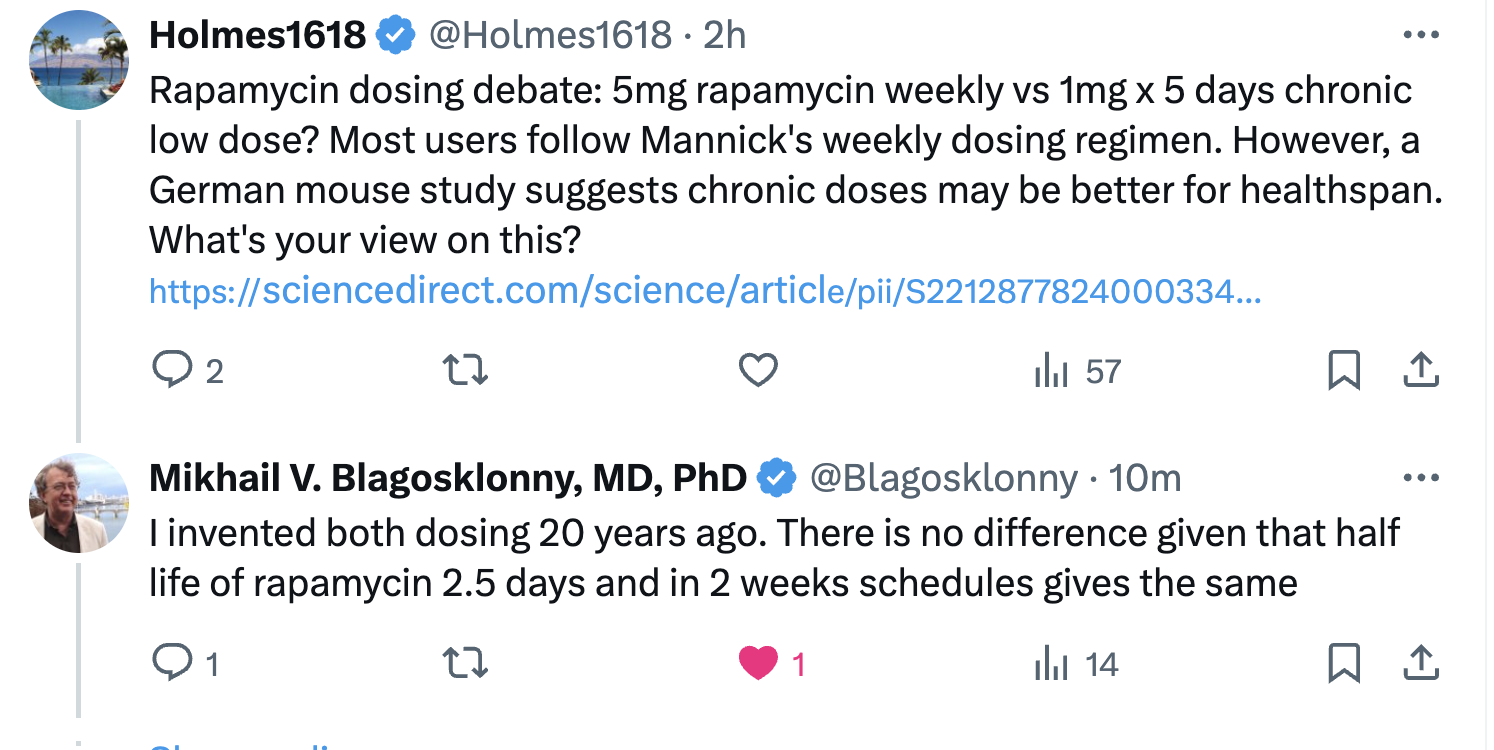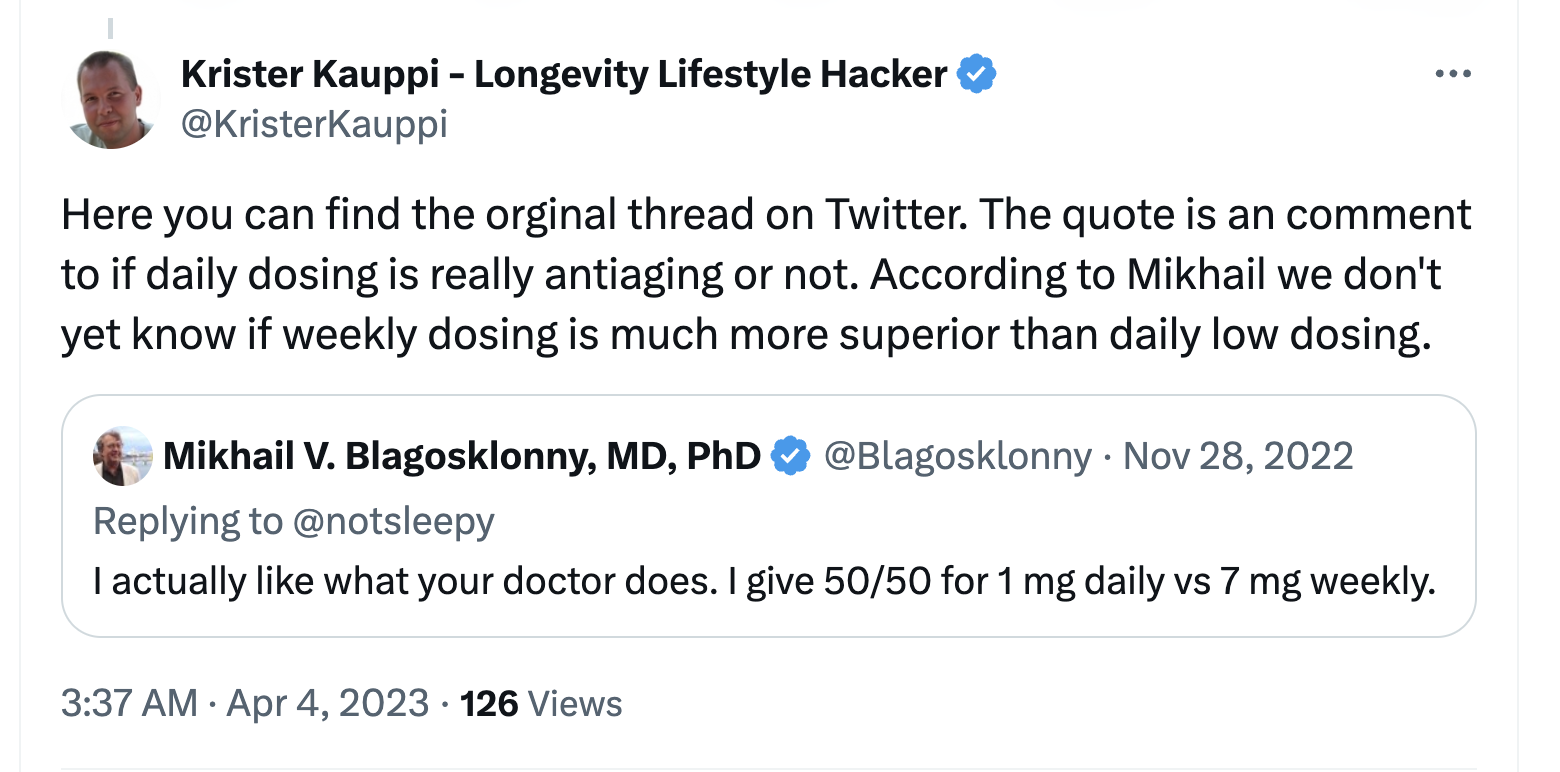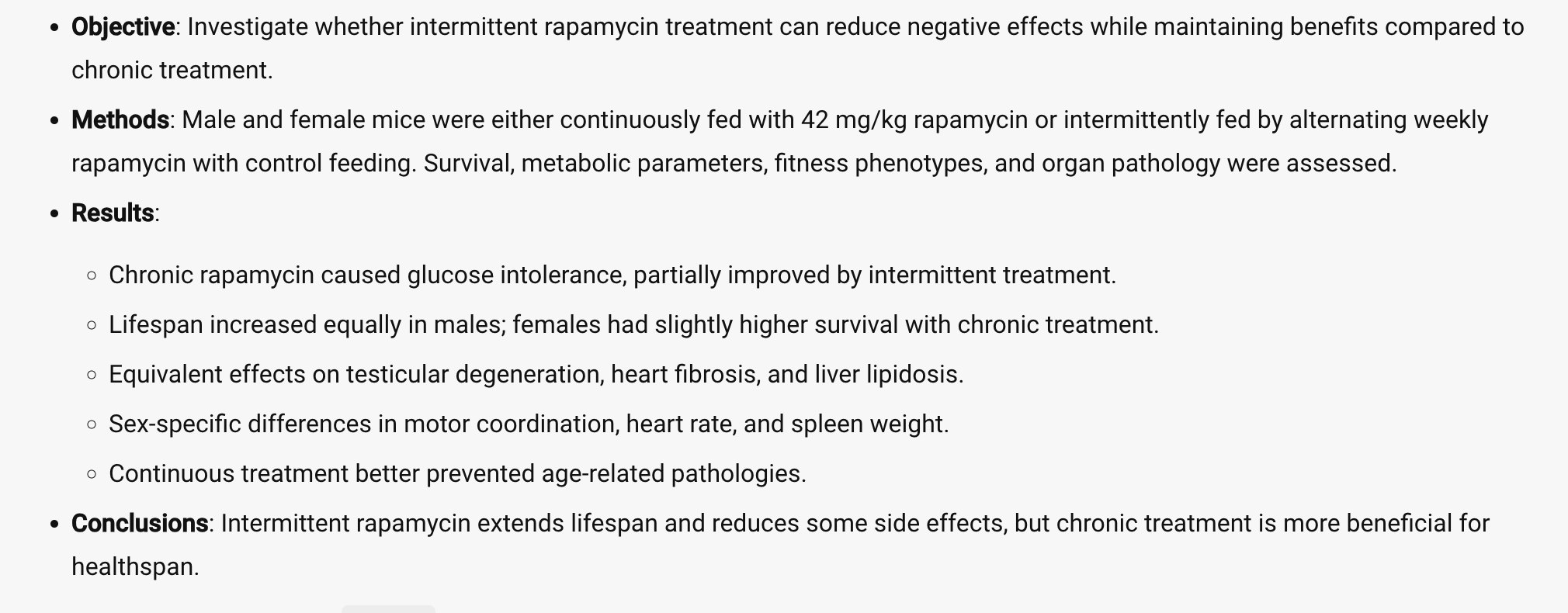Its certainly true that we don’t know the optimal dosing for humans of rapamycin for longevity, and sadly, until there are some good clinical trials we won’t know.
Temporary testicular atrophy is also commonly seen in higher levels of caloric restriction and protein restriction, and is likely part of the evolutionary stress adaption of mammals to periods when food is scarce. There is a significant overlap between how rapamycin works (and its effects), and caloric restriction. And when the caloric restriction is removed, things return to normal from what I’ve read.
Protein Restriction (PR) treatment decreased testis-relative weight compared with Control rats. This finding agrees with the data of Ajuogu et al. (2020), Vawda and Mandlwana (1990), and de Souza Santos et al. (2004). This is relatable to testicular atrophy and/or alteration in the gonad’s biochemical state. Indeed, as suggested by Hanai and Esashi (2012), a decreased gonadic activity, as demonstrated by a low testosterone concentration, may cause testis involution.
Source: Protein vs. Energy Restriction Impact on Rat Testis’ Function, Redox Status, and Histomorphometry - PMC.
And, just as with mammals who are temporarily calorically restricted, then go on to have offspring, Transplant patients who stop rapamycin also go on to have children with no issues:
Conclusions
This survey does not provide any warning signal that pregnancies fathered by male patients exposed to immunosuppressive agents, notably the debated MMF/MPA, have more complications than pregnancies in the general population. (Source)
The present study revealed that low doses of rapamycin could lead to activation of autophagy in rat testes. This may be a self-protection mechanism of the cell in response to external stress. …
Notably, it was demonstrated that the damaged structure of seminiferous tubules and reduced number of sperm was reversible after withdrawal of rapamycin, which is consistent with previous research (3). Source: Rapamycin inhibits spermatogenesis by changing the autophagy status through suppressing mechanistic target of rapamycin-p70S6 kinase in male rats - PMC
Related reading: Possible Rapamycin Risks for Healthy Humans (Part 2)
You might also find this comparison of different dosing levels and rough estimates on the equivalent dosing for humans:
In a general sense, we can see that higher dosing (within the range tested in mice so far) the higher the dose, the greater the longevity effects. But this was for mice in sterile, pathogen-free environments (lab environments). Unfortunately we don’t live in that type of environment. The mice are highly immune compromised at these high levels, and would likely suffer/die in a regular environment with the typical infectious agent exposures. There have been situations where people are taking high daily dosing of rapamycin / rapalog (everolimus) … for example 10mg/day in some trials, and at least one young woman got sepsis and died… see details here: Rapamycin Taken with GFJ and EVOO - #11 by RapAdmin
And - while think the general belief is that its the AUC (area under the curve) of the exposure to rapamycin that matters (vs. the CMAX or half-life), I don’t think I’ve seen any research on this issue specifically with regard to lifespan - so I think we don’t know for sure of the impact of each of these variables independently on lifespan.
Here are the dose translations (and LS (lifespan) increase) from the other rapamycin studies:
Sirolimus
Dose |
Mouse
mg/kg/day
Dose |
Mouse:
Blood/Sirolimus
Level |
Human
mg/kg/day
Dose |
Dose for 60kg Human |
Daily Dose adjusted for longer half-life (/4) |
| 4.7ppm |
∼2.24 |
3 to 4 ng/mL |
0.182 mg/kg |
10.92 mg |
2.73 mg |
| 14ppm |
~6.67 |
9-16 ng/mL |
0.542 mg/kg |
32.54 mg |
8.135 mg |
| 42ppm |
~20 |
23-80 ng/mL |
1.626 mg/kg |
97.56 mg |
24.39 mg |
| 126ppm |
~60 |
|
4.878 mg/kg |
292.68 mg |
73.17 mg |
| 378ppm |
~180 |
45 to 1800 ng/mL |
14.634 mg/kg |
878.04 mg |
218 mg |
|
|
|
|
|
|
|
|
|
|
|
|
|
|
|
|
|
|
Sirolimus
Dose |
mg/kg/day
Dose |
Blood/Sirolimus
Level |
Male Median LS Increase |
Female Median LS Increase |
|
| 4.7ppm |
∼2.24 |
3 to 4 ng/mL |
3% |
16% |
|
| 14ppm |
~6.67 |
9-16 ng/mL |
13% |
21% |
|
| 42ppm |
~20 |
23-80 ng/mL |
23% |
26% |
|
Based on the FDA animal to human dosing conversion guide here.
Note: ½ life for sirolimus in mice is approx. 15 hours, vs. approx. 62 hours in humans. So, mice metabolize sirolimus approximately 4 times faster than humans.




